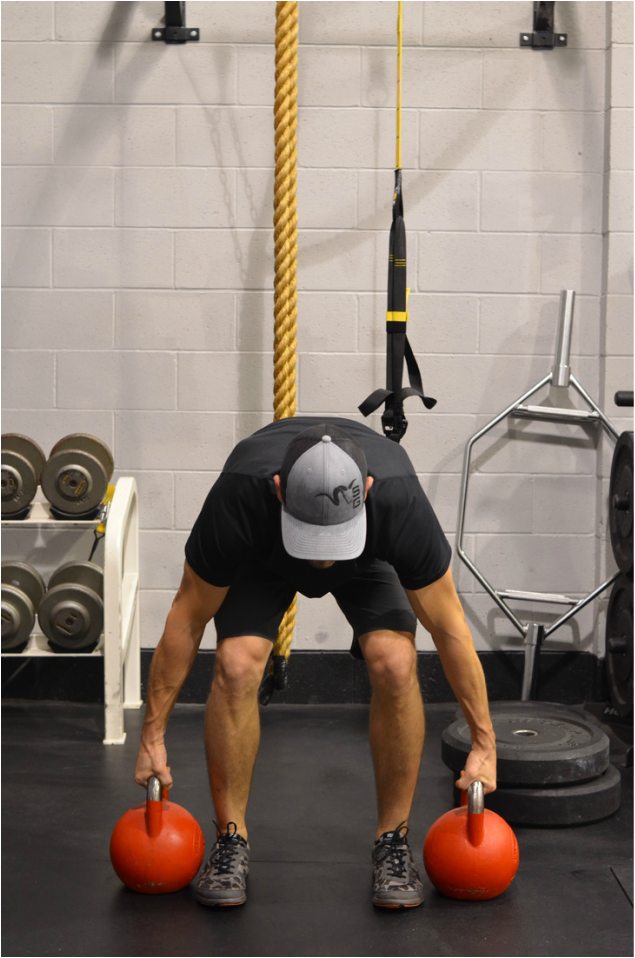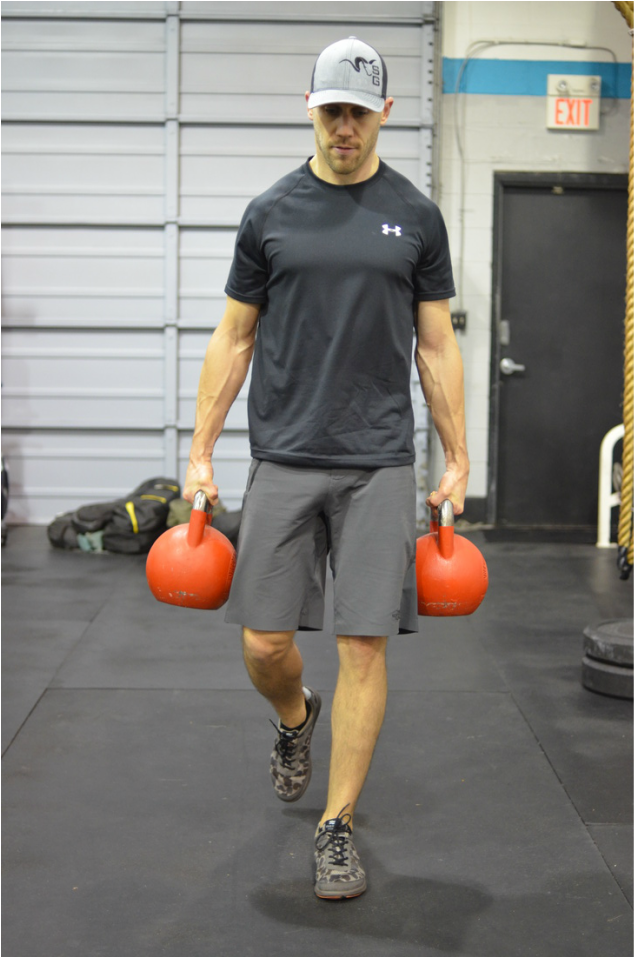The farmer’s carry is a missing ingredient in many individual’s strength programs. The utter simplicity of walking with heavy weight and perfect posture can have profound effects on building muscle and solidifying a bullet proof torso. Few exercises prepare a hunter to meet the physical demands of packing and carrying heavy loads in the wild as well as a weighted carry.
World renowned strength and conditioning coach Dan John once stated:
“The loaded carry does more to expand athletic qualities than any other single lift or exercise I’ve attempted in my career as a coach and an athlete.”
That is one hell of a statement, especially when you consider the body of work Dan brings to the table.
So why not simply load up your pack and it wear it for some of your workouts? Or simply treat your weekend training hikes as long distance “weighted carries”?
Although there is nothing wrong with this “version” of the weighted carry, it does not have the same total body effect as walking with heavy weight gripped tightly in your hands. The total body coordination required to hold heavy weight while walking for distance is vastly different from the neuromuscular demands of walking with a loaded pack. This is not to suggest you should not train with your pack at the gym. That is after all one of the specific tasks required of the mountain or backcountry hunter and certainly falls under the umbrella of “weighted carries”. It simply shouldn’t be the only weighted carry you utilize in your training program and is most certainly not the most effective tool in the weighted carry toolbox.
With most of today’s pack systems, the weight is distributed away from the shoulders and torso to the hips and this significantly changes (aka reduces) the total muscle mass required to perform the carry. In the field this weight redistribution is a lifesaver but when it comes to training and preparation you’ll get considerably more “bang for your buck” by incorporating the actual farmer carry into your training program. By truly carrying the weight in your hands using heavy kettlebells, farmer’s walk bars or sandbags the upper torso, shoulders and neck are brought into the equation resulting in recruitment of a considerably higher amount of total muscle mass and forces the entire spine to “stack” (aka align) in a way that is rarely achieved even with the most perfectly fit and sized pack system. Especially under high loads.
If your grip strength is a limiting factor, a great weighted – farmer’s carry combo is to carry the heaviest kettlebells or bars you can handle WHILE wearing your pack loaded up to test your capabilities.
We recommend rotating strength training around these three types of training days:
- Light weight and long distance (40-60m)
- Mid weight and mid distance (20-30m)
- Heavy weight and short distance (10-15m)
Remember, the “test” of the farmer’s carry is to carry weight over as a long distance as possible as quickly as possible. Carrying heavier weight, walking for longer distances, quickening your time for a given distance, or a combination of these are all progressions you should build into your regimen.
For further variations on the weighted carry an excellent resource is this article from Dan John himself at T-Nation:
https://www.t-nation.com/training/secret-of-loaded-carries
We can assure you, if you incorporate a heavy farmer’s carry into your weekly programming, by next season that 60 plus pound pack you plan on carrying into the backcountry will feel like a welcome relief by comparison.
Technique Tips:
1) Center yourself – Do not “grip it and rip it” using poor form to get the weights off the ground. Make sure your hands are centered on the grips/handles and you are picking up the weight with the deadlift technique found here.

2) Organize your spine – Once you center yourself, get solid through your whole body. Squeeze the glutes and brace the core. Get the chest up and sit your weight through the heels. Drive through the floor to pick up the weight. If you pick the handles up in a disadvantaged position, then you’ll be at a disadvantage throughout.
3) Stay long and strong – Get tall by standing up, making sure the hips are open and the shoulders are pinned back. Keep your rib cage down and your head neutral, allowing your spine to work as one solid unit. Squeeze the glutes and tuck your rib cage in to straighten up. Look straight ahead.
4) Small, but fast steps – Taking small steps will help to stop the weight from swinging by your side. Warm up with quick heel-to-toe walks, just to get used to shortening your stride. But small does not mean slow. Move your feet quickly!
5) Drop carefully – Make a judgement call depending on the type of equipment you’re using. Sandbags and farmer’s walk bars will generally stay where they’re dropped whereas kettlebells can be downright dangerous if dropped while moving. When you get to the end of your carry – shoulders burning, arms about to fall off, and grip about to give – the overwhelming urge is to just drop the equipment. However, if you’re doing these as part of a circuit (or outdoors in rough terrain) where you’ll have to turn around and pick everything up again, taking a second to put the weight down under control is usually worth the extra time and effort.
Bryce Hafso
BSc. Health and Fitness Mgmt, CSCS, NCCP
Strength and Conditioning Coach
Hunting Fitness Correspondent for The Journal of Mountain Hunting
Adam Janke
Editor in Chief
FMS 1 & 2
Matt Thompson
Field Editor
FMS 1
About Our Correspondent:
Bryce Hafso is a Strength and Conditioning Specialist, who’s client CV includes athletes from the NHL, AHL, CFL, MLS and numerous Canadian National Athletes. He is the co-founder and head performance coach of Primal Performance.
Completing his undergraduate studies at the University of Montana-Western, Bryce was exposed to the mountain lifestyle of the Big Sky State and completed his first successful elk hunt in 2007. His passion for the outdoors grew immensely after that experience as he immersed himself in fishing, hunting and mountain backpacking all over Montana and the Pacific Northwest. He now resides in Vancouver, British Columbia.



